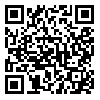BibTeX | RIS | EndNote | Medlars | ProCite | Reference Manager | RefWorks
Send citation to:
URL: http://sjsph.tums.ac.ir/article-1-5475-en.html
2- .D. Associate Professor, Department of Health Education and Promotion, School of Public Health, Tehran University of Medical Sciences, Tehran, Iran ,
3- Ph.D. Professor, Department of Health Management and Economics, School of Public Health, Tehran University of Medical Sciences, Tehran, Iran
4- Ph.D. Assistant Professor, Department of Epidemiology and Biostatistics, School of Public Health, Tehran University of Medical Sciences, Tehran, Iran
: Materials and MethodsThis study was a randomized controlled trial including 396 patients, conducted in 10 randomly health centers allocated as intervention or control groups. The data were collected using questionnaires. The educational intervention included holding educational classes, distribution of pamphlets, hanging posters/flyers, ResultsAnalysis of the data showed statistically significant differences between mean scores of the health belief model components (knowledge, perceived susceptibility, perceived severity, perceived benefits, perceived barriers) and practice in both the intervention and control groups before and after the educational intervention (p < 0.01).
: <span lang="EN" times="" new="" roman";="" "times="" "b="" lotus";="" en;="" major-bidi;="" major-bidi;"="">Considering the self-reported increased awareness and decreased practice in the intervention group, it seems that the health belief model is an appropriate model for reducing arbitrary use of antibiotics.
Received: 2017/06/13 | Accepted: 2017/06/13 | Published: 2017/06/13
| Rights and permissions | |
 |
This work is licensed under a Creative Commons Attribution-NonCommercial 4.0 International License. |





